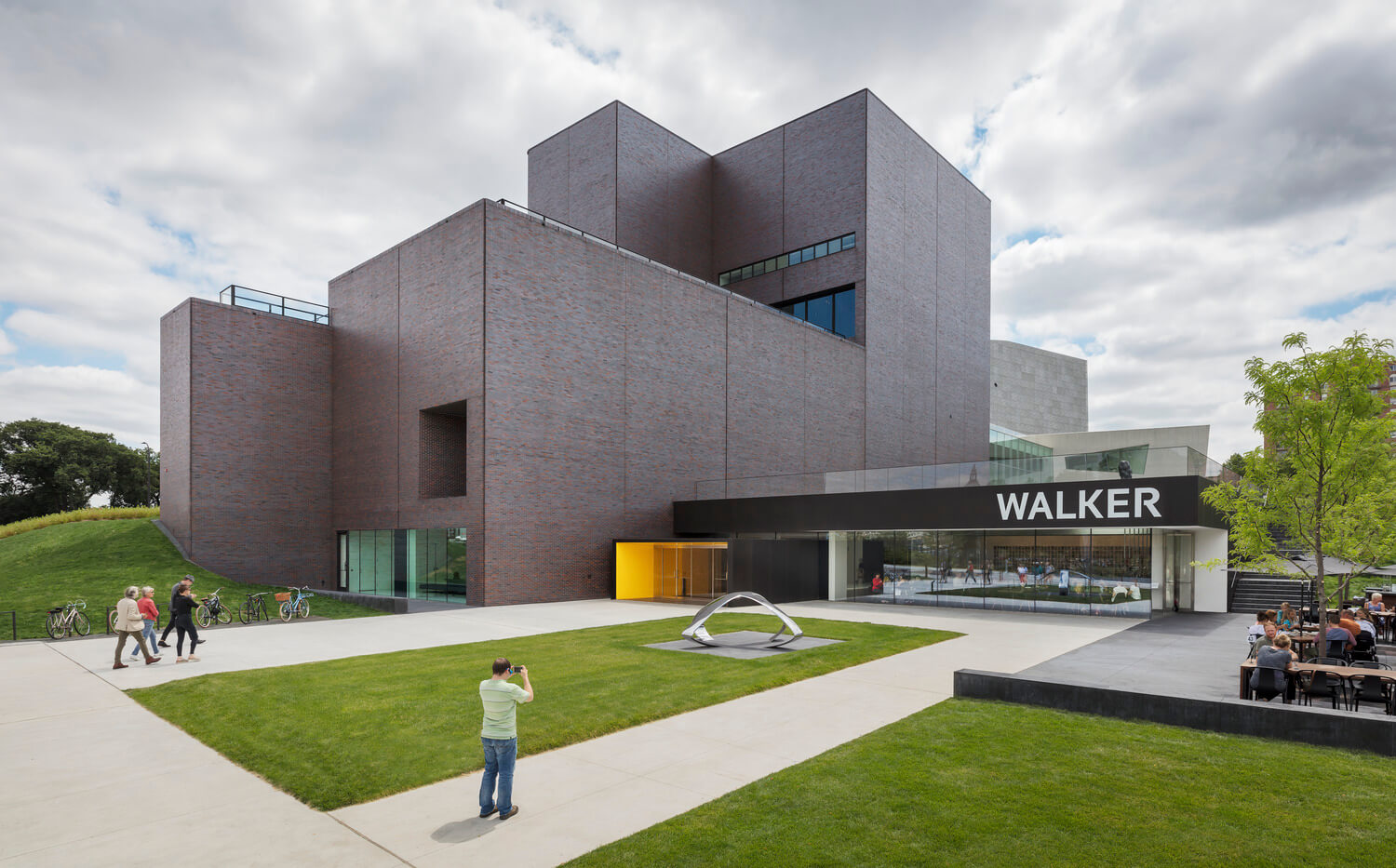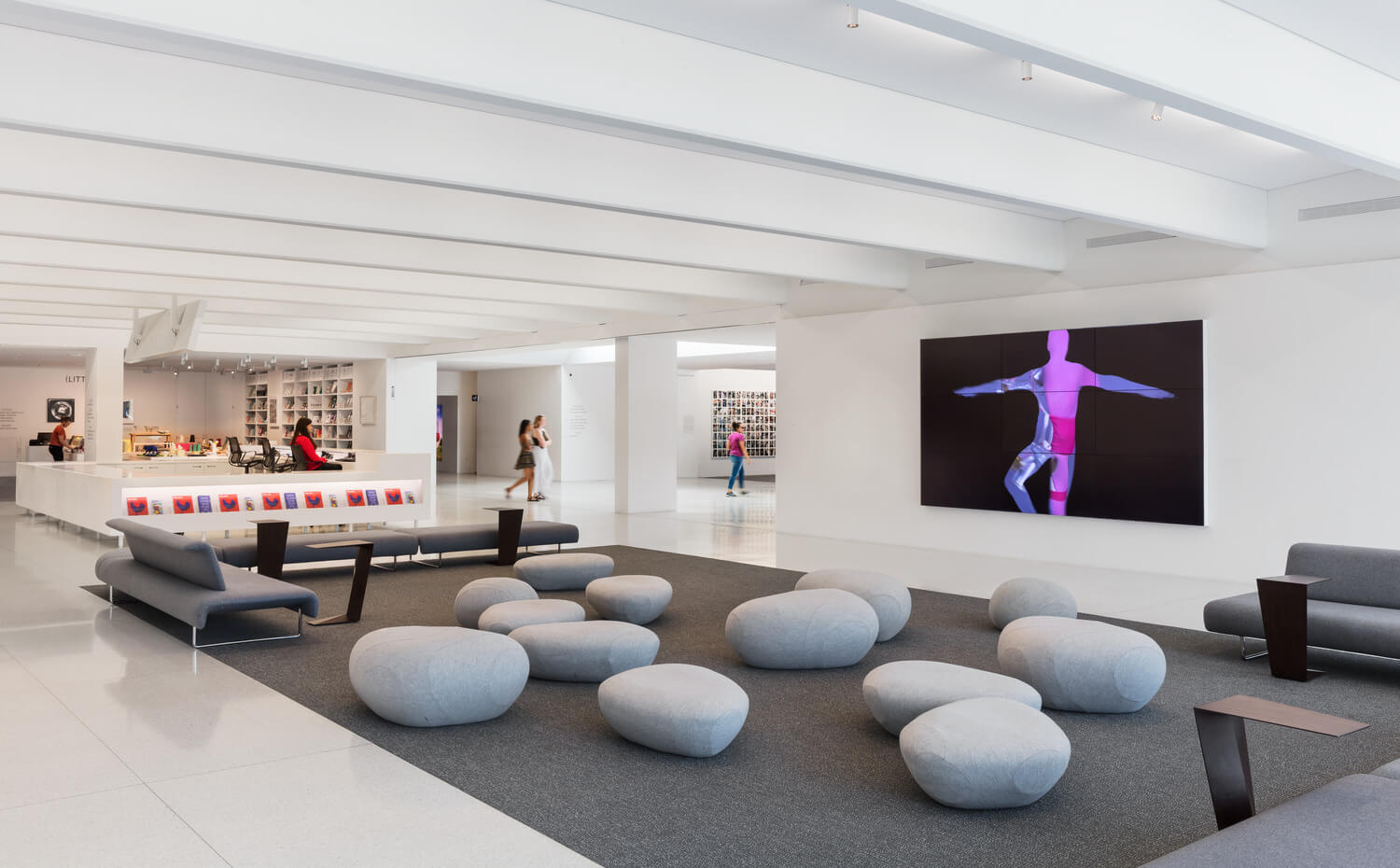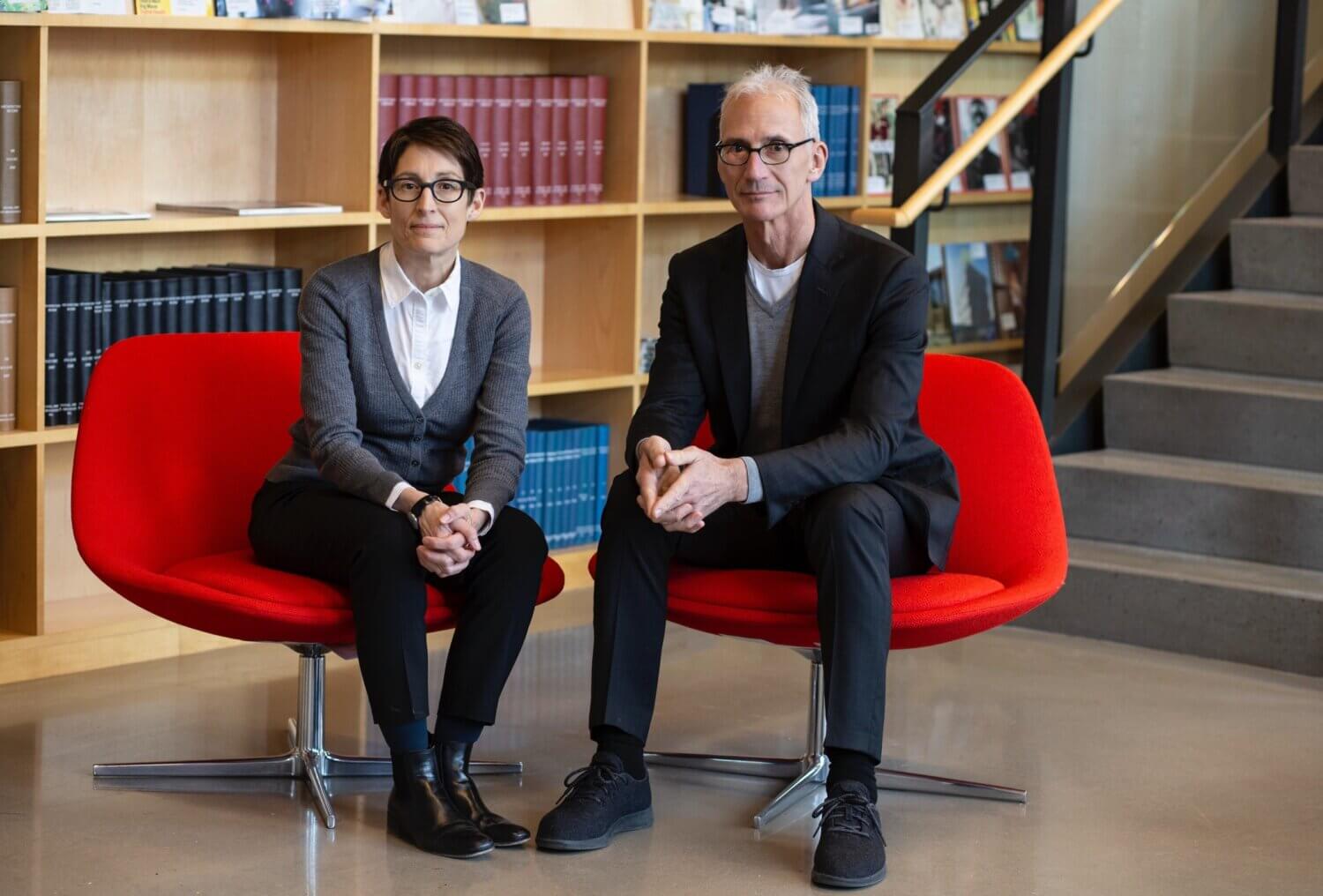
Joan M. Soranno, FAIA, and John Cook, FAIA, have forged a uniquely creative process at HGA that is an incubator for innovative design. Their collaboration has resulted in works of singular beauty that are aesthetically driven and technically challenging for clients who share their creative vision. As strong believers in mentorship and the power of design collaboration, they have trained many emerging architects who have gone on to leadership roles at HGA or elsewhere in the industry.
Through the years, they have won numerous design awards, including the 2023 AIA Architecture Award for Marlboro Music Reich Hall—their fourth, along with Walker Art Center Expansion (2021), Lakewood Cemetery Garden Mausoleum (2014), and Bigelow Chapel at United Theological Seminary of the Twin Cities (2006).
In the following, they discuss the personal and professional rewards of working with clients and team members who share their passion for design.
Congratulations on winning your fourth AIA Architecture Award. What does this award mean to you?
We are particularly proud that all four awards are for different project types. We have a chapel with Bigelow, a mausoleum with Lakewood, an art museum with Walker, and now a music hall with Marlboro. We always have been interested in a wide variety of arts, cultural, and sacred buildings.
The other piece is that we inherited an incredible legacy. Ted Butler, FAIA, along with other earlier design leaders, was primarily responsible for setting high standards for design excellence at HGA with such AIA award-winning projects as the Colonial Church of Edina in Minnesota (1980), New Melleray Abbey in Iowa (1977), and Saint Bede’s Priory in Wisconsin (1967).
When you inherit that legacy, it comes with great responsibility to continue it. This legacy is an important part of our work. And we’re confident the next generation of architects will continue to strengthen this commitment to design excellence.
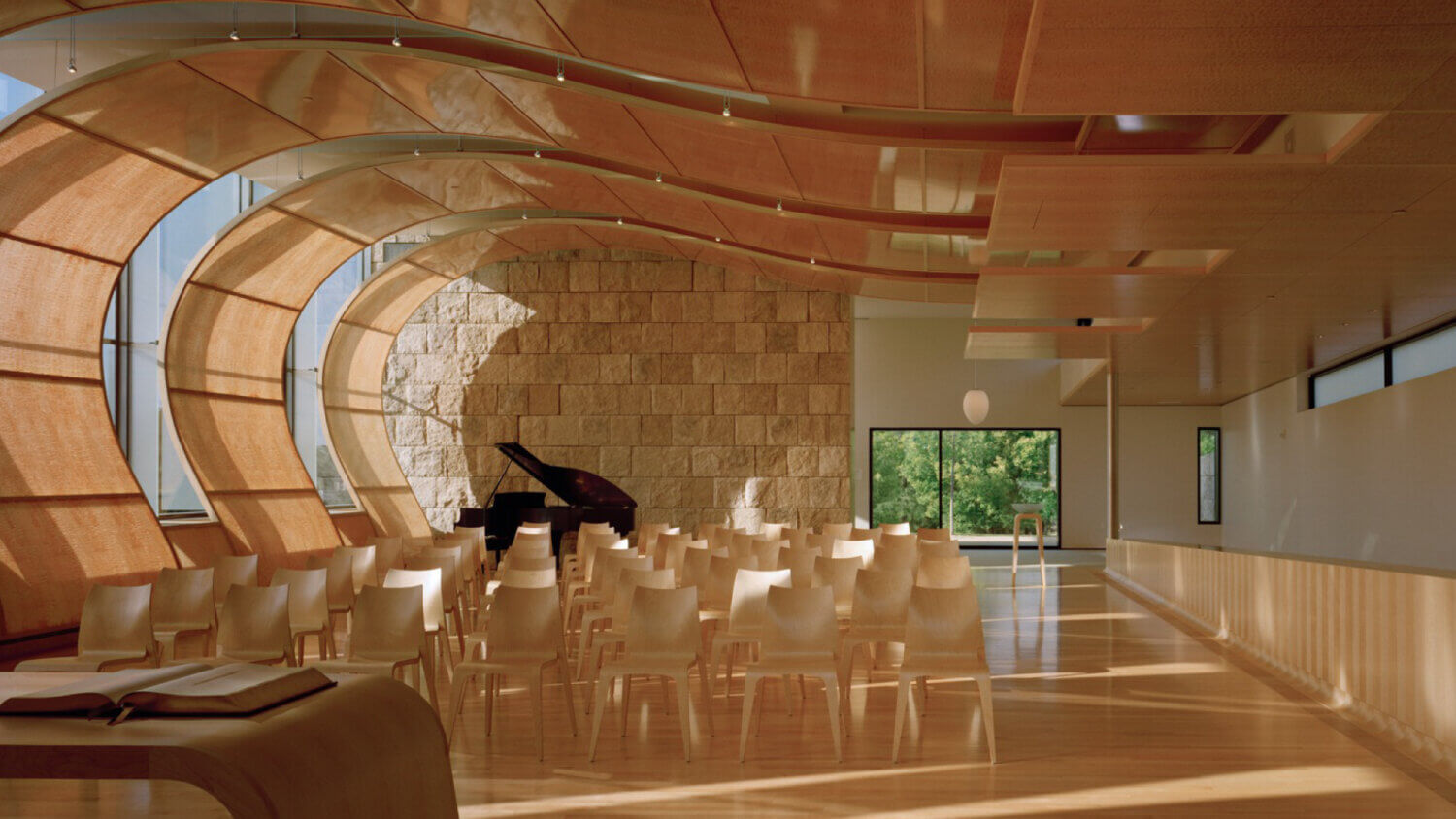
You’ve done several projects with Marlboro Music. How does this ongoing relationship inform your design insight?
We’ve been working with Marlboro for more than 10 years. We began with a series of five cottages for visiting musicians, then a residence hall for students, and now the music hall. With each project, we learned a little more about the client and the history of the campus as a retreat for classical musicians who gather every summer for the Music Festival. It’s a strong partnership that’s founded on trust and respect—a meeting of the minds.
That must be rewarding to develop this relationship and share this award with them.
Marlboro has become a special place for us. When we first went there for the cottages project, we originally thought of doing a high-contemporary design that would challenge the rural Vermont vernacular a little bit. But it didn’t take long, after driving around the region and touring the campus, that we realized the cabins had to reflect the existing vernacular architecture and ethos of Marlboro Music. It had to be part of what came before.
Did you have any idea when you first visited Marlboro that this would turn into a long-term relationship?
No, not at all. As we were driving away after photographing the finished cottages, we thought this would probably be the last time we would be there. But fortunately, we did return. Over the years, we have developed truly special relations with the client and amazing musicians and composers who return every summer. Spending more than 10 years with them was the chance of a lifetime. Marlboro has really been one of the highlights of our career.
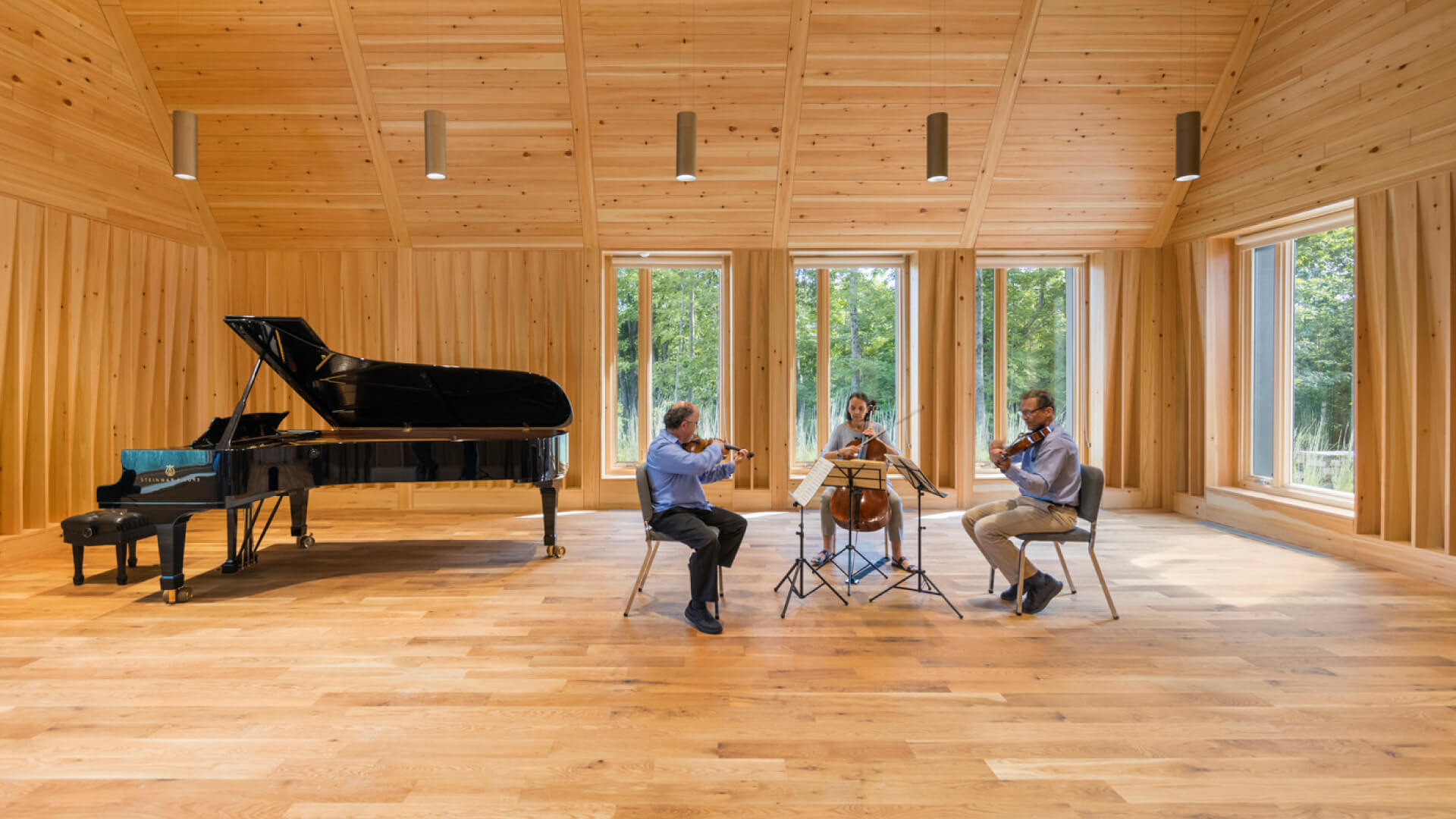
Tell us more about your design process when starting a project.
Basically, we engage in a deep-dive research process. We start by ordering books and other secondary sources to learn as much as possible about the client, institution, region, and building type before we even meet them for the first interview. The importance of research is to start well to finish well. It’s important to listen, be fully engaged early on, set the vision from the beginning, and adhere to that vision as closely as possible throughout the design process.
You often describe your work as aesthetically driven and technically challenging. Is there a particular project that illustrates this?
Our work does not necessarily reflect a signature style. If you think about the differences between Marlboro versus Lakewood, they don’t look like they’re designed by the same architect—and we’re proud of that because, again, our work responds to the clients’ vision and goals.
There’s a famous quote that says simplicity is complexity resolved. And that is the approach we take. We want people to feel the space is right when they’re in it and accomplishes what it set out to do. It feels just as it should feel—appropriate to the program and context.

So, making complexity simple is the aesthetic that ties these four award-winning buildings together?
The common thread is that every concept is fully resolved both aesthetically and technically. That attention to detail—no matter how seemingly small—is the driving force of our work and is carried through, leaving nothing to chance.
The Marlboro rehearsal spaces, for example, feature rich wood walls and ceilings and big windows overlooking a wooded site—a beautiful, intimate space. But hidden behind that wood is a technically sophisticated acoustical system integrated with precisely modulated wooden panels that makes this an ideal rehearsal space. We created a space that projects the simple beauty of wood and sunlight—with technology out of sight but acoustically precise.
That is what we mean by aesthetically driven and technically challenging.
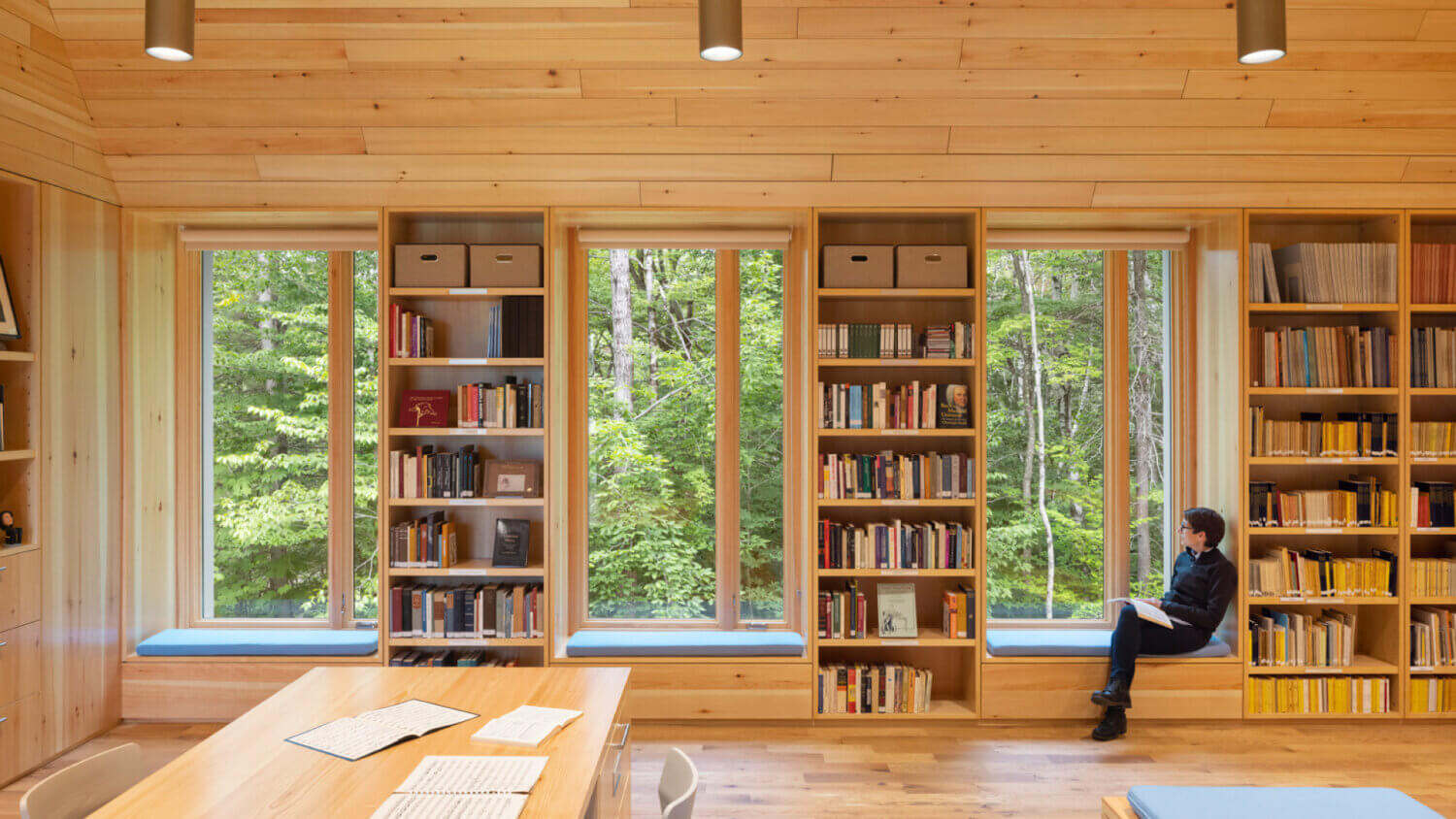
It is often said that great design starts with a great client? Is design a mutual exchange of ideas?
The client-architect relationship is like a marriage. We’ve been fortunate to work with clients who are smart and aesthetically driven, so, yes, they do inspire our design. Sometimes, a simple thing that they say can drive the whole concept of the project, such as with the Walker Art Center.
When we started, they said, “We don’t want a third charm on the charm bracelet.” That was such an inspiring thing to say. They already had a previous addition that aesthetically contrasted with the original brick museum. They wanted something that integrated with the two, that didn’t call attention to itself. That set the tone through every detail.
For the information/ticketing desk location, they suggested it should be like a rock in the middle of a river, with everything flowing around it. The desk is centrally located exactly where people expect to find it, guiding the flow of people and activity through the lobby.
Your collaborative partnership often serves as a training ground for emerging designers. How does this influence your creative process?
We truly believe that our work would not have been as successful without the incredible talent working alongside us. A lot of younger architects have gone on to do amazing things in their careers, whether at HGA or other places. These buildings are not just our ideas; they’re the ideas of our whole team. We benefit from being part of a collective effort. We’ve learned a lot from the people we’ve worked with. And they, hopefully, have learned some things from us and take that knowledge forward. It’s a mutual exchange of ideas.
What advice do you have for the next generation of emerging architects?
Never lose sight of what gets you up in the morning. Never lose sight of that passion that you have for whatever it is. As you get older and have more experience, there’s a tendency to move away from the things that initially drew you to the architecture profession. Always stay true to what you love doing and never get away from that.
What’s next on your agenda?
Just doing more projects. With great clients. It’s as simple as that.

